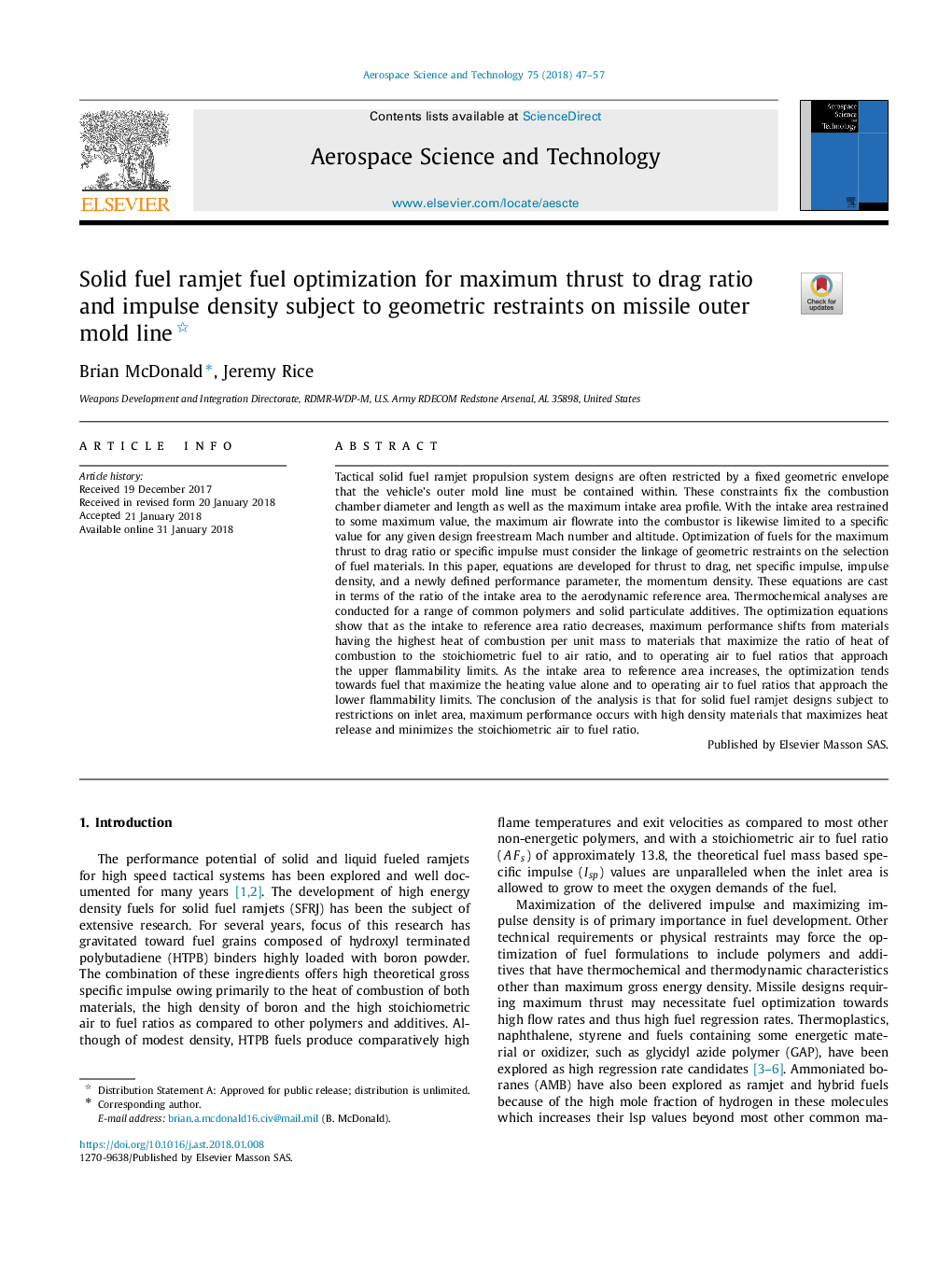| Article ID | Journal | Published Year | Pages | File Type |
|---|---|---|---|---|
| 8057937 | Aerospace Science and Technology | 2018 | 11 Pages |
Abstract
Tactical solid fuel ramjet propulsion system designs are often restricted by a fixed geometric envelope that the vehicle's outer mold line must be contained within. These constraints fix the combustion chamber diameter and length as well as the maximum intake area profile. With the intake area restrained to some maximum value, the maximum air flowrate into the combustor is likewise limited to a specific value for any given design freestream Mach number and altitude. Optimization of fuels for the maximum thrust to drag ratio or specific impulse must consider the linkage of geometric restraints on the selection of fuel materials. In this paper, equations are developed for thrust to drag, net specific impulse, impulse density, and a newly defined performance parameter, the momentum density. These equations are cast in terms of the ratio of the intake area to the aerodynamic reference area. Thermochemical analyses are conducted for a range of common polymers and solid particulate additives. The optimization equations show that as the intake to reference area ratio decreases, maximum performance shifts from materials having the highest heat of combustion per unit mass to materials that maximize the ratio of heat of combustion to the stoichiometric fuel to air ratio, and to operating air to fuel ratios that approach the upper flammability limits. As the intake area to reference area increases, the optimization tends towards fuel that maximize the heating value alone and to operating air to fuel ratios that approach the lower flammability limits. The conclusion of the analysis is that for solid fuel ramjet designs subject to restrictions on inlet area, maximum performance occurs with high density materials that maximizes heat release and minimizes the stoichiometric air to fuel ratio.
Related Topics
Physical Sciences and Engineering
Engineering
Aerospace Engineering
Authors
Brian McDonald, Jeremy Rice,
